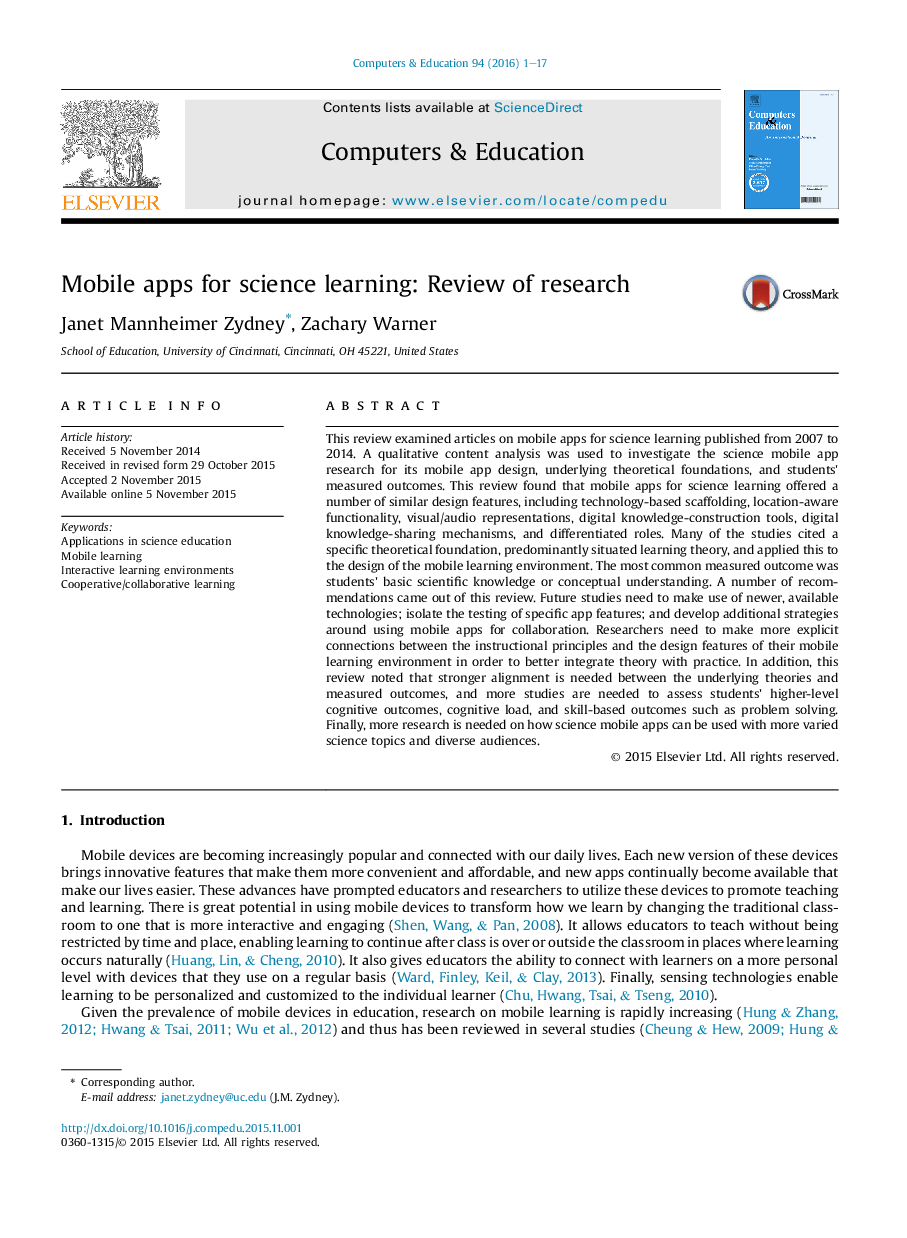| Article ID | Journal | Published Year | Pages | File Type |
|---|---|---|---|---|
| 6834932 | Computers & Education | 2016 | 17 Pages |
Abstract
This review examined articles on mobile apps for science learning published from 2007 to 2014. A qualitative content analysis was used to investigate the science mobile app research for its mobile app design, underlying theoretical foundations, and students' measured outcomes. This review found that mobile apps for science learning offered a number of similar design features, including technology-based scaffolding, location-aware functionality, visual/audio representations, digital knowledge-construction tools, digital knowledge-sharing mechanisms, and differentiated roles. Many of the studies cited a specific theoretical foundation, predominantly situated learning theory, and applied this to the design of the mobile learning environment. The most common measured outcome was students' basic scientific knowledge or conceptual understanding. A number of recommendations came out of this review. Future studies need to make use of newer, available technologies; isolate the testing of specific app features; and develop additional strategies around using mobile apps for collaboration. Researchers need to make more explicit connections between the instructional principles and the design features of their mobile learning environment in order to better integrate theory with practice. In addition, this review noted that stronger alignment is needed between the underlying theories and measured outcomes, and more studies are needed to assess students' higher-level cognitive outcomes, cognitive load, and skill-based outcomes such as problem solving. Finally, more research is needed on how science mobile apps can be used with more varied science topics and diverse audiences.
Related Topics
Social Sciences and Humanities
Social Sciences
Education
Authors
Janet Mannheimer Zydney, Zachary Warner,
